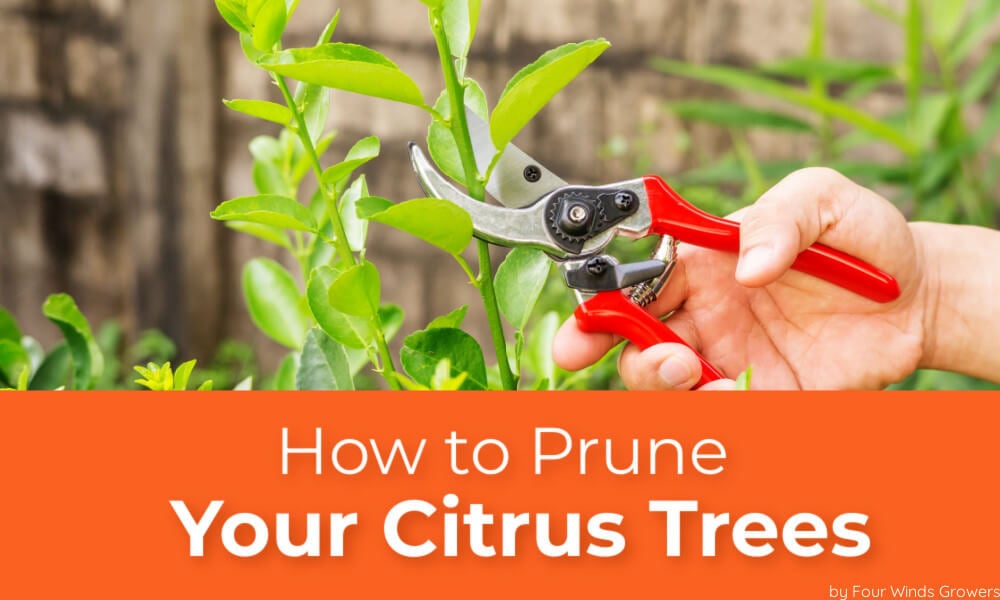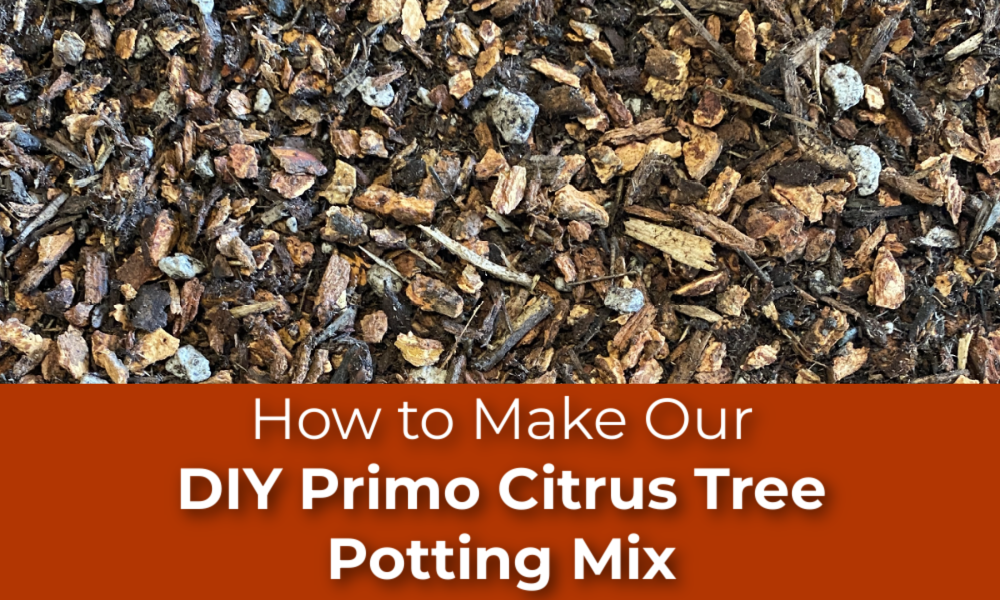How To Prune Your Citrus Trees
Pruning your citrus trees is an important part of tree management. Early tree shaping will give you the best start, and pruning older trees is great for managing fruiting surface area. Continue reading to learn more on how to prune your citrus trees.
The ideal time to prune your citrus trees is in early spring or after your last frost, which is just before the spring flush (new growth). Pruning at this time will allow flush to harden off before the citrus leaf miner pest is present. Pruning your citrus in the summer or fall will cause the tree to flush just during a time of maximum leaf miner pressure, resulting in lots of damage. Pruning your citrus tree in winter can be problematic because the tender new growth has the potential to be damaged by freezing temperatures, as it won't have time to harden off.
The first step in pruning is to gather a few tools and sanitize them. Common tools for pruning include pruning shears for cuts smaller than an inch, loppers for cuts up to two inches, and an optional pruning saw, which can help when making larger cuts to established trees. Safety equipment like gloves and safety glasses are also very important when working on thorny trees like citrus. Sterilize your tools with rubbing alcohol or 2% bleach solution (1 part bleach: 50 parts water). Bleach is quite corrosive, so rinsing your tools with water after treatment will help to prevent rusting. Repeat this cleaning step at the end of a day's work to maintain sterile tools, and consider treating your tools with machine oil or WD-40 to further protect your tools from oxidation.
Pruning citrus trees is different from pruning deciduous fruit trees like pome & stone fruits. Citrus trees are subtropical evergreen trees with different growing habits, and prefer a more hedged pruning method over to the structured pruning methods used in deciduous fruit trees.
Pruning Young & Starter Sized Trees: Most citrus trees fresh from the nursery are grown as whips and some having a few branches to start with. When planting a juvenile tree, it is crucial that you implement an annual tree pruning habit to manage the tree growth over the years. It is recommended that you top your tree at the time of planting to encourage branching and lateral growth in its first few seasons. This can be done with a simple heading cut. A heading cut will reduce a lengthy branch by about half and encourage side branching which will create a fuller and more bushy tree. For a young or starter tree, choose a location about a quarter of the way down from the top to cut and encourage branching. Be careful during this step not to reduce your tree too low, since most fruit trees are grafted, and cutting your tree below the graft line will result in a tree that is purely rootstock and will not have the desired fruiting variety. If your tree already has decent branching at the desired height, you can skip this step and simply pinch off the terminal buds of each branch to encourage more branching. A terminal bud is a bud at the very end of a branch.
When pruning any kind of fruit tree you want to be mindful of your graft line. The graft line is the point at which the rootstock has healed with the fruiting variety, or scion. You can identify your graft line by a line of scar tissue typically about 4”-8” above the soil line. It is very important to remove any growth from below the graft line to prevent rootstock from taking over. Rootstocks are chosen primarily for their ability to create a smaller than standard size tree, and also for their ability to resist pests and diseases, but do not grow edible fruit. Any growth coming from the rootstock, also known as suckers, should be removed.
Pruning More Established Trees: For older or more established trees, pruning should be done post-harvest in the early spring after your last frost date. A good place to start is by removing all of your dead, damaged, or diseased branches. Thinning out these unproductive branches will improve airflow and light reach within the tree as well as redirect energy to fruiting branches. Inner canopy leafless branches can also be removed. Once our unproductive wood is removed, we can head back lengthy branches to keep the canopy compact. In a commercial setting, citrus trees are hedge pruned to regulate the shape and so that the canopy is one solid mass. This maximizes fruit production.
Keeping a young tree compact and cutting back lengthy growth will keep the canopy to an optimal shape for easy maintenance, even light penetration, and make for easy harvesting. These steps of early shaping in young trees will greatly reduce the need for intensive pruning in the future.
Once you are happy with your final shape, look over your tree and identify areas where light is penetrating the canopy and directly hitting exposed branches and or trunk. Applying a layer of IV Organics Plant Guard tree paint to these exposed branches/trunk areas will help protect the tree from sunburn and winter scald until the canopy fills out. This step is crucial for growers in climates that get over 90°F in the summer.
Author: Israel Osuna




